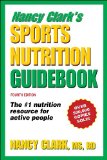In a nutshell:
Copper is important for the growth of bones and the formation of connective tissue. Copper is a component of many enzymes which are thought to protect the body against the destructive effects of free radicals. Copper is also needed for the absorption of iron.
In-depth:
The total amount of copper in the human body is only about 100 to 150 mg and most of it is linked to proteins. Copper is a component of a series of enzymes (oxidases) and plays an important role in iron metabolism and therefore also in the synthesis of haemoglobin (formation of red blood cells). Copper is also important for the pigmentation of skin and hair. Copper plays an important role in the composition of connective tissue and bone growth.
Acidic foods should not be placed in copper dishes as this can lead to the formation of toxic copper bonds. Furthermore, copper ions have a negative effect on vitamin C.
Requirement, deficiency, oversupply:
Recommended intake according to the DGE* |
Age |
Male |
Female |
19 - 25 |
1 - 1.5 mg |
1 - 1.5 mg |
25 - 51 |
1 - 1.5 mg |
1 - 1.5 mg |
51 - 65 |
1 - 1.5 mg |
1 - 1.5 mg |
over 65 |
1 - 1.5 mg |
1 - 1.5 mg |
*DGE - Deutsche Gesellschaft für Ernährung - a German Nutrition Society.
If copper is deficient in the body e.g. as a result of a one-sided diet, haemoglobin formation is disrupted and so anaemia is likely to occur. In addition to this the pigmentation of the skin is also affected.
There are interactions amongst copper, zinc and vitamin C. This means that the absorption of one of the substances inhibits the other. An increased intake of these two substances (vitamin C and zinc) can cause a slight deficiency of copper in the body.
top  |
Copper in Food:
Foods rich in copper include giblets (especially liver), fish, shellfish, nuts, cocoa and certain green vegetables.
Copper in 100 g Food:
Chocolate: 12.5 mg
Hummer: 6.7 mg
Calf's liver: 4.5 mg
Oysters: 3.6 mg
Cocoa powder: 3.5 mg
Beef liver: 2.8 mg
Sunflower seeds: 2.8 mg
Lentils, peas, kidney beans: 0.7 - 0.8 mg
top 

Prescription for Nutritional Healing, Fifth Edition: A Practical A-to-Z Reference to Drug-Free Remedies Using Vitamins, Minerals, Herbs & Food Supplements, Phyllis A. Balch CNC

Nancy Clark's Sports Nutrition Guidebook
Nancy Clark

The Complete Book of Food Counts, 9th Edition: The Book That Counts It All
|

